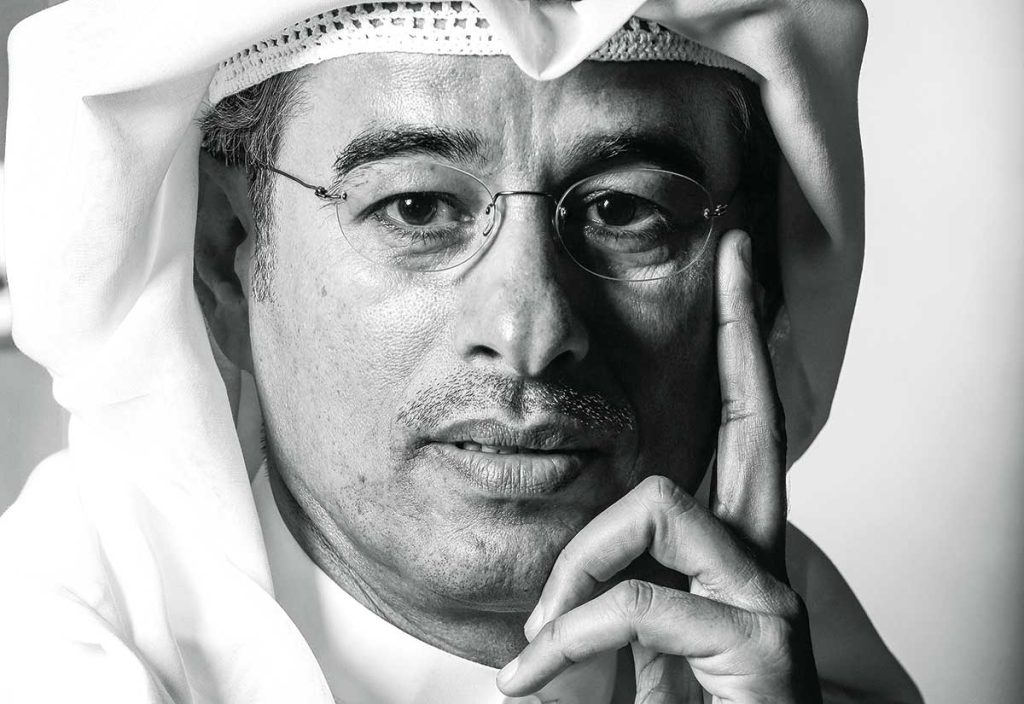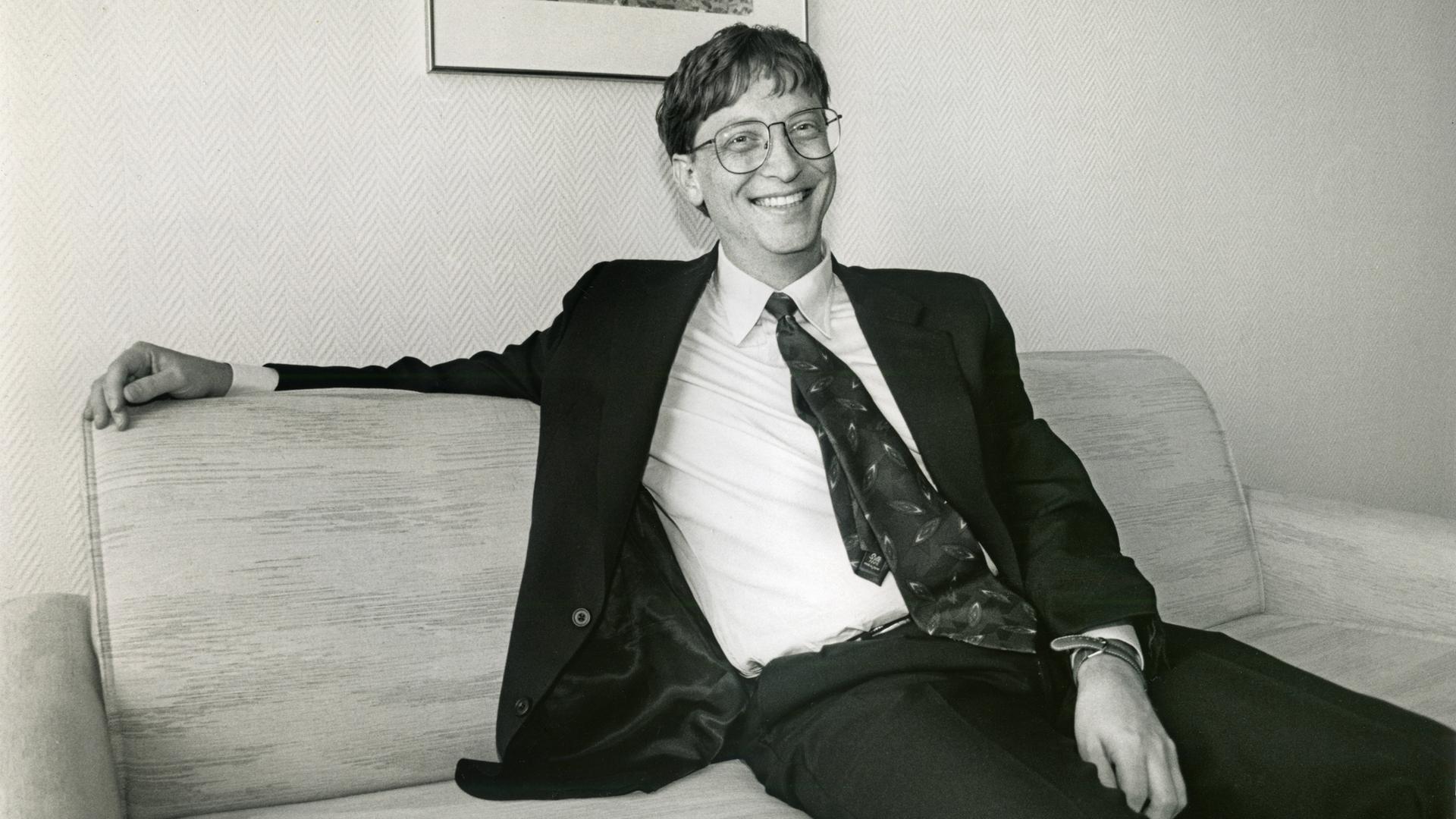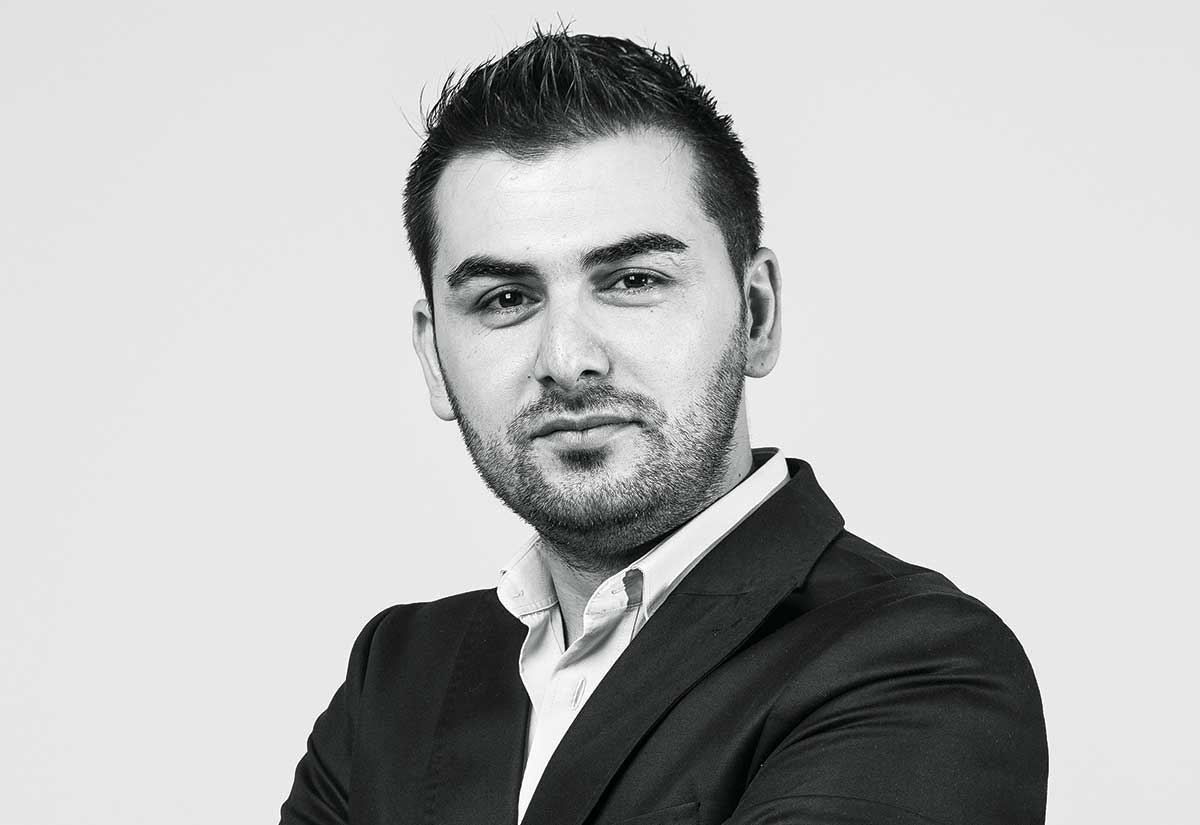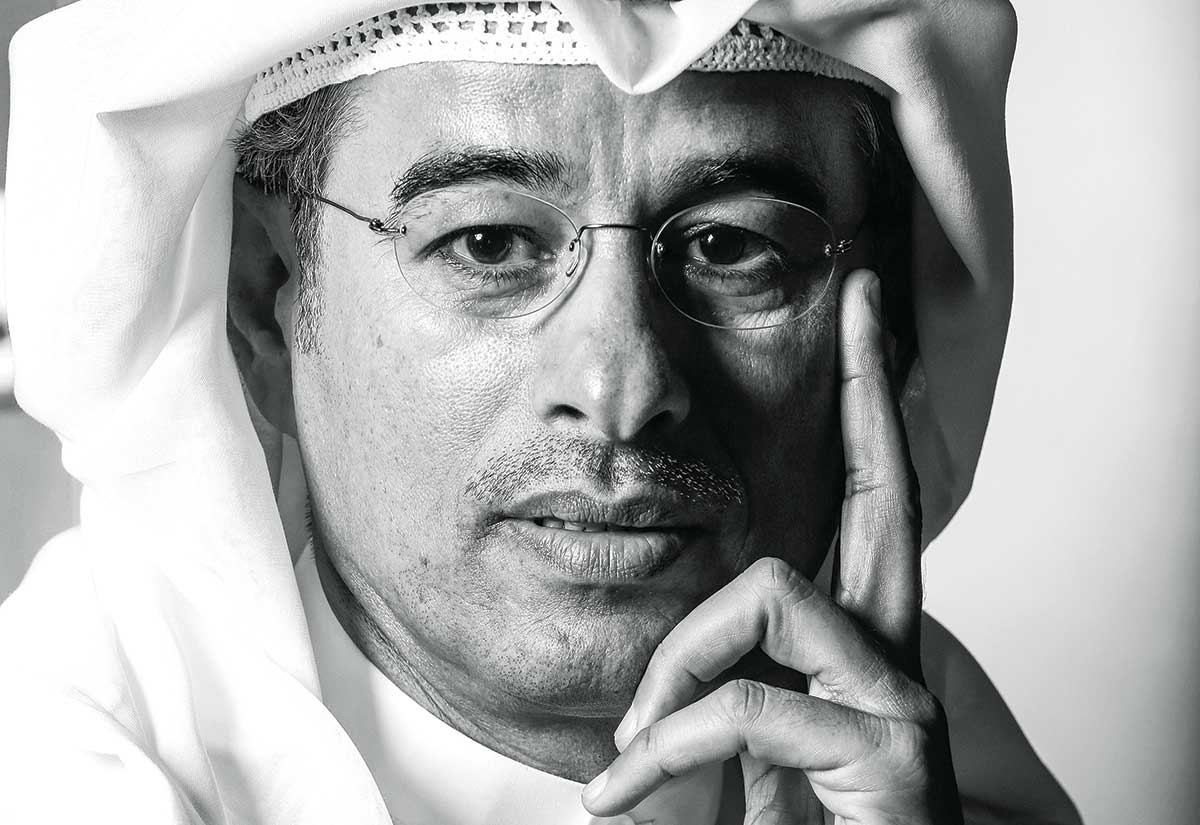Introduction
Few business leaders have shaped a city the way Mohamed Alabbar has shaped Dubai. Long before the desert city became a hub of glass towers, luxury malls, and international tourism, Alabbar was laying the groundwork for what would become one of the most ambitious real estate stories in modern history.
As the founder of Emaar Properties, Alabbar has been the driving force behind landmarks that define Dubai’s global image. The Burj Khalifa, the tallest building on earth, is not simply a feat of engineering. It is a symbol of ambition. The Dubai Mall, among the largest shopping centers in the world, is not merely a retail hub. It is a cultural destination that attracts more visitors each year than entire nations.
Emaar under Alabbar became more than a real estate company. It became a brand that represented Dubai’s rise as a global power in lifestyle, tourism, and commerce. Like the entrepreneurs who defined Silicon Valley, Alabbar turned ideas into icons and visions into skylines.
This article traces his journey: from humble beginnings, to founding Emaar, to leading projects that made Dubai a household name, and finally to his reinvention as a diversified businessman with ventures across real estate, hospitality, and digital commerce.
1. The Early Life of Mohamed Alabbar
Mohamed Ali Alabbar was born in 1956 in Dubai, a city that looked nothing like it does today. At the time, Dubai was a small Gulf port best known for fishing, pearl diving, and trade across the Arabian Peninsula. His father worked as a fisherman, and Alabbar grew up with a deep respect for discipline, modesty, and hard work.
In interviews, he has often recalled waking up at dawn to help his father and observing the patience required in a life tied to the sea. This environment gave him resilience and a sense of responsibility that would later define his leadership style.
His fortunes changed when he received a government scholarship to study abroad. He traveled to the United States and enrolled at Seattle University, where he studied finance and business administration. The move was transformative.
In Seattle, Alabbar was exposed to Western models of urban planning, retail culture, and lifestyle communities. He saw how malls were not just places to shop but also social hubs. He noticed how well-planned cities integrated residential, commercial, and leisure activities. He understood that scale and consumer experience could turn real estate into something far greater than buildings.
Graduating in 1981, he worked briefly in the U.S. before returning to Dubai. His first major role came when he was appointed Director of Dubai’s Department of Economic Development, a position that placed him at the center of Dubai’s early modernization. Here, he worked closely with Sheikh Mohammed bin Rashid Al Maktoum, who was then Crown Prince, and the two developed a long-lasting partnership built on trust and shared ambition.
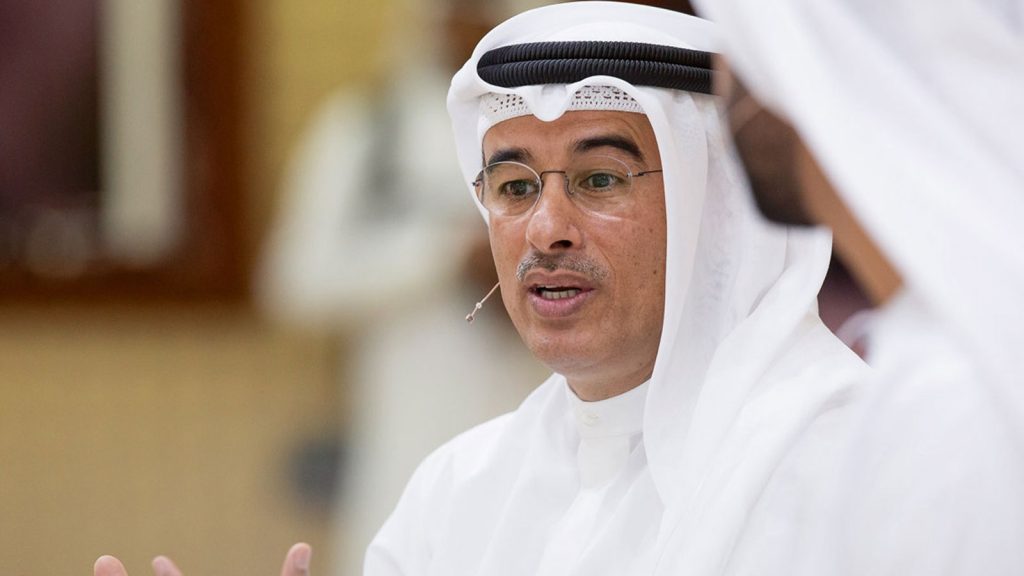
2. Founding of Emaar Properties (1997)
By the mid-1990s, Dubai was undergoing rapid change. Free zones such as Jebel Ali were attracting foreign investment, Emirates Airline was connecting the city to the world, and the government was laying infrastructure for large-scale growth. What the city needed was a real estate developer capable of translating ambition into concrete projects.
In 1997, Mohamed Alabbar founded Emaar Properties, backed by Dubai’s government. At the time, property ownership laws for foreigners were restrictive, and the real estate sector was fragmented. Alabbar’s vision was not to compete with existing developers but to reinvent what real estate meant in the Middle East.
He wanted to build not just houses but entire communities. Not just malls but global attractions. Not just hotels but lifestyle brands. This mindset set Emaar apart from the start.
Emaar launched with a clear mission: to “shape lifestyles.” It was more than a slogan. It was a philosophy that guided every decision, from architecture to customer experience.
3. Early Projects and the Road to Ambition
Emaar’s first projects were bold statements. The company launched Dubai Marina, a 3.5-kilometer waterfront development that transformed barren coastline into a thriving residential and commercial hub. Inspired by global waterfronts such as Marina Bay in Singapore and Sydney Harbour, Dubai Marina introduced a new standard of luxury living in the UAE.
Next came Emirates Hills, one of the region’s first gated communities with golf course views and palatial villas. Nicknamed the “Beverly Hills of Dubai,” it became home to high-net-worth individuals, celebrities, and international investors. Emirates Hills demonstrated that Dubai could attract global wealth if it offered exclusivity and lifestyle.
These early successes gave Emaar both credibility and confidence. But Alabbar’s ambitions went far beyond residential projects. He wanted to create symbols that would define Dubai on the global stage.
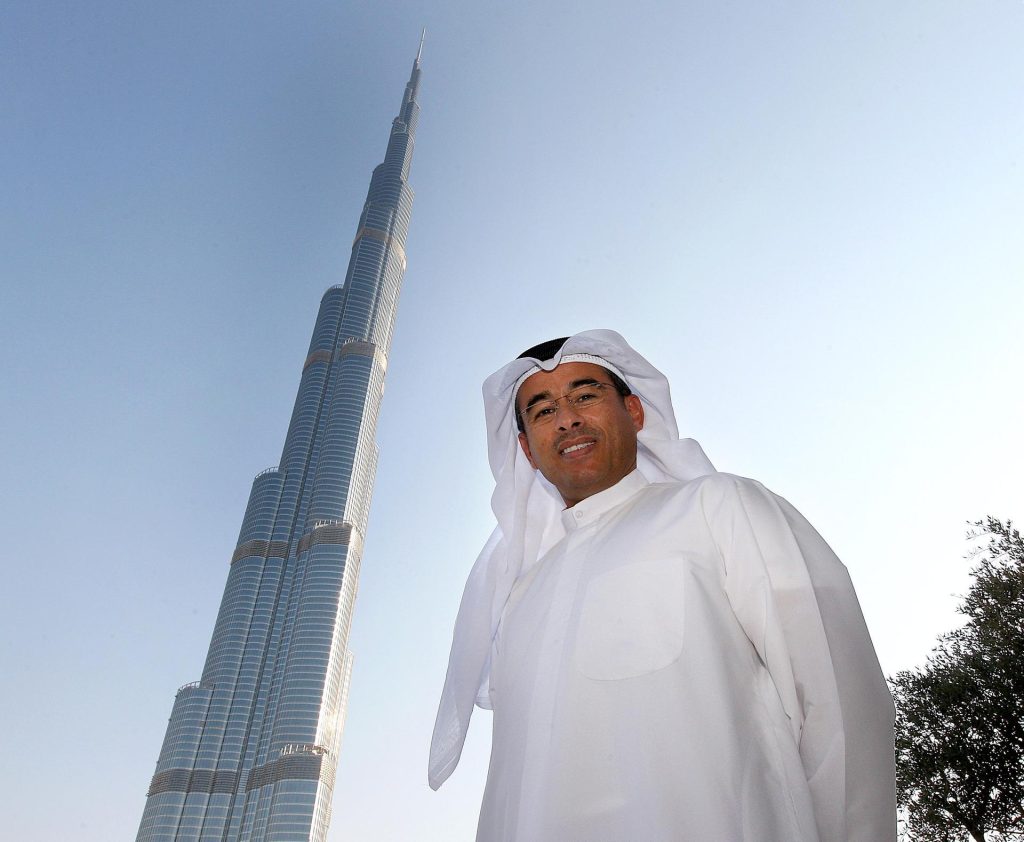
4. Burj Khalifa: Reaching for the Sky
In 2004, Emaar announced its most daring project: the Burj Dubai, later renamed Burj Khalifa in honor of Sheikh Khalifa bin Zayed Al Nahyan. The project aimed to build the tallest skyscraper in the world. At the time, no one had attempted such a feat in the Middle East.
Designed by the U.S. firm Skidmore, Owings & Merrill, the tower would eventually rise to 828 meters, surpassing all existing records. The construction required cutting-edge technology, from high-strength concrete capable of withstanding Gulf heat to wind tunnel testing to ensure stability.
Critics said it was unnecessary, too expensive, and risky. Alabbar argued otherwise. For him, the Burj was not just a building. It was a brand statement. It told the world that Dubai could dream bigger and execute better than any city on earth.
When it opened in 2010, the Burj Khalifa instantly became a global icon. It contained luxury residences, corporate suites, the Armani Hotel, and observation decks that drew millions of visitors. More importantly, it became the most photographed landmark in the Middle East, cementing Dubai’s place in the global imagination.
The Burj Khalifa was not only an engineering triumph. It was a marketing triumph. Every documentary, news report, and tourist photo reinforced Emaar’s position as a company capable of delivering the extraordinary.
5. The Dubai Mall: Reinventing Retail
Alongside the Burj Khalifa, Emaar developed the Dubai Mall, which opened in 2008. Covering more than 12 million square feet, it became one of the largest malls in the world. With over 1,200 retail outlets, an Olympic-sized ice rink, a giant aquarium, and luxury hotels, it was designed as a destination, not just a shopping center.
The strategy was clear: to make Dubai Mall a magnet for tourists. It worked. Within a few years, the mall was attracting over 80 million visitors annually, more than the entire population of many countries. Families could spend entire days there, blending shopping with entertainment, dining, and cultural attractions.
Luxury brands flocked to the mall, from Chanel and Louis Vuitton to Cartier and Rolex. Retailers saw it as a gateway to the Middle East’s growing consumer base. The Dubai Mall became not only a commercial success but also a cultural symbol of Dubai’s embrace of global luxury.
6. International Expansion
By the late 2000s, Emaar had established dominance in Dubai. Alabbar turned his eyes abroad. The company expanded into Egypt, Saudi Arabia, Turkey, India, Pakistan, and other markets. Projects included Uptown Cairo, Mivida, and Emaar Square Istanbul.
The strategy was to replicate the Dubai model: large-scale, integrated communities with high-quality retail and hospitality components. Not every venture thrived. Political instability in Egypt and currency fluctuations in Turkey created challenges. But the expansion reinforced Emaar’s image as a global developer.
By 2020, Emaar had operations in more than 36 markets worldwide, making it one of the most geographically diverse developers on earth.

7. Leadership Style and Vision
Mohamed Alabbar’s leadership style is often described as relentlessly ambitious. He sets audacious goals and pushes his teams to achieve them. Employees have described him as demanding but inspiring, someone who never accepts mediocrity.
He combines vision with execution. While architects and engineers bring designs to life, Alabbar ensures projects align with a larger purpose: reinforcing Dubai’s global status. He is also deeply customer-focused, insisting that every Emaar property offer not just a product but an experience.
This focus on lifestyle rather than real estate is what set Emaar apart. Buyers were not just purchasing a villa or an apartment. They were buying into a curated way of life.
8. Challenges and Controversies
Emaar’s rise was not without obstacles. The 2008 global financial crisis nearly derailed Dubai’s property market. Prices fell sharply, projects were delayed, and confidence waned. Emaar’s stock plummeted, and the company faced pressure from investors.
Alabbar navigated the crisis through restructuring, government support, and focusing on flagship projects that could restore confidence. The timely opening of the Burj Khalifa in 2010 became a turning point, signaling recovery.
Emaar also faced controversies over safety in high-rise towers. Fires in some residential towers across Dubai led to public concern, though Emaar maintained it followed regulations.
Another recurring critique is Alabbar’s close relationship with the Dubai government. Some argue Emaar’s success was tied to state backing. Supporters counter that without Alabbar’s vision and execution, the government’s ambitions would have remained on paper.
9. Beyond Real Estate: Diversification
Alabbar has consistently expanded beyond property. Emaar’s hospitality arm launched Address Hotels + Resorts, a luxury brand that competes with global chains. The company also developed Vida Hotels, catering to younger travelers.
In retail, Emaar spun off Emaar Malls, which was later merged into Emaar Properties after listing on the Dubai Financial Market.
Perhaps Alabbar’s boldest move outside real estate was the creation of Noon.com in 2017. Conceived as the Middle East’s answer to Amazon, Noon started with $1 billion in funding, including investment from Saudi Arabia’s Public Investment Fund. Despite early skepticism, Noon grew rapidly, capturing significant e-commerce market share in the UAE and Saudi Arabia.
This shift into digital commerce showed that Alabbar was not tied to bricks and mortar. He understood that the future of lifestyle also lived online.
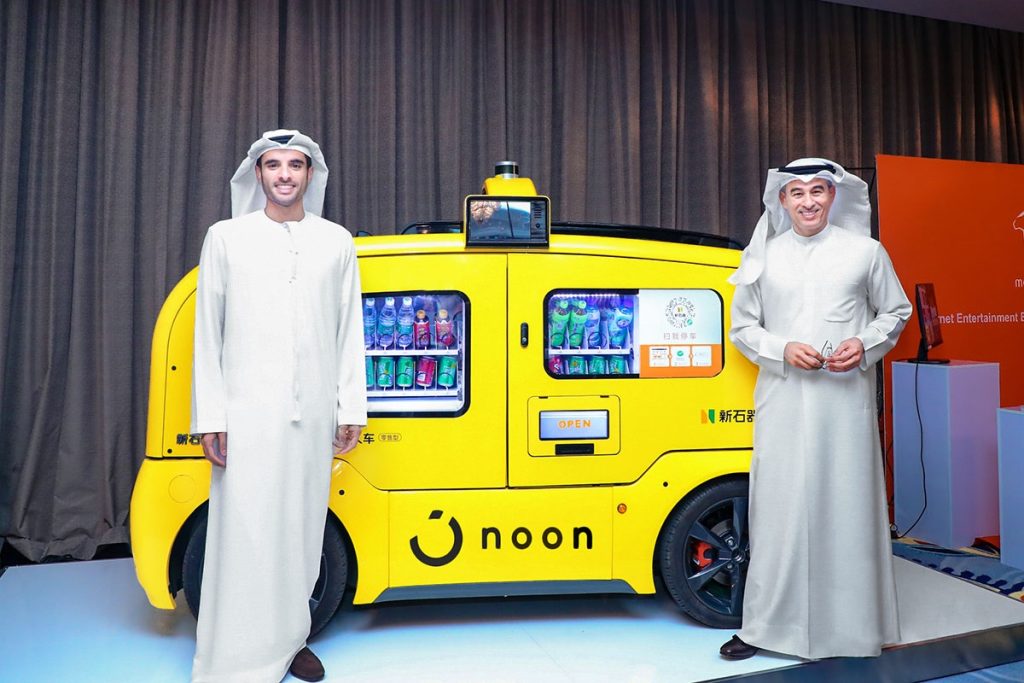
10. Resilience and Reinvention
Alabbar’s career is defined by resilience. He has endured financial crises, competitive pressures, and changing consumer trends. Each time, he reinvented his business model.
When retail slowed during the COVID-19 pandemic, Noon.com surged as online shopping became essential. When hospitality faced disruption, Emaar invested in digital engagement. When property cycles softened, the company diversified into recurring revenue businesses like malls and hotels.
This adaptability is one reason Alabbar remains one of the most influential figures in Middle Eastern business. He does not cling to old models. He evolves.
11. Global Legacy
Today, Emaar Properties is valued at billions of dollars and recognized globally. But Alabbar’s legacy is not just in financial performance. It is in the symbols he created.
The Burj Khalifa is to Dubai what the Eiffel Tower is to Paris. The Dubai Mall is to the Middle East what Times Square is to New York. These are more than buildings. They are landmarks that define a city’s identity.
Alabbar’s projects have influenced how other cities in the region think about development. From Riyadh to Cairo, developers seek to emulate the Emaar model: large-scale, integrated communities that blend real estate with lifestyle.
12. Personal Life and Influence
Despite his fame, Alabbar is known for discipline and modesty. He maintains a rigorous fitness routine, often rising early to exercise before work. He has spoken about how his father’s fishing background shaped his outlook, teaching him humility and persistence.
He is also a mentor to younger entrepreneurs, often encouraging them to think beyond the region and embrace global competition. His message is consistent: the Middle East can produce companies that rival the best in the world.
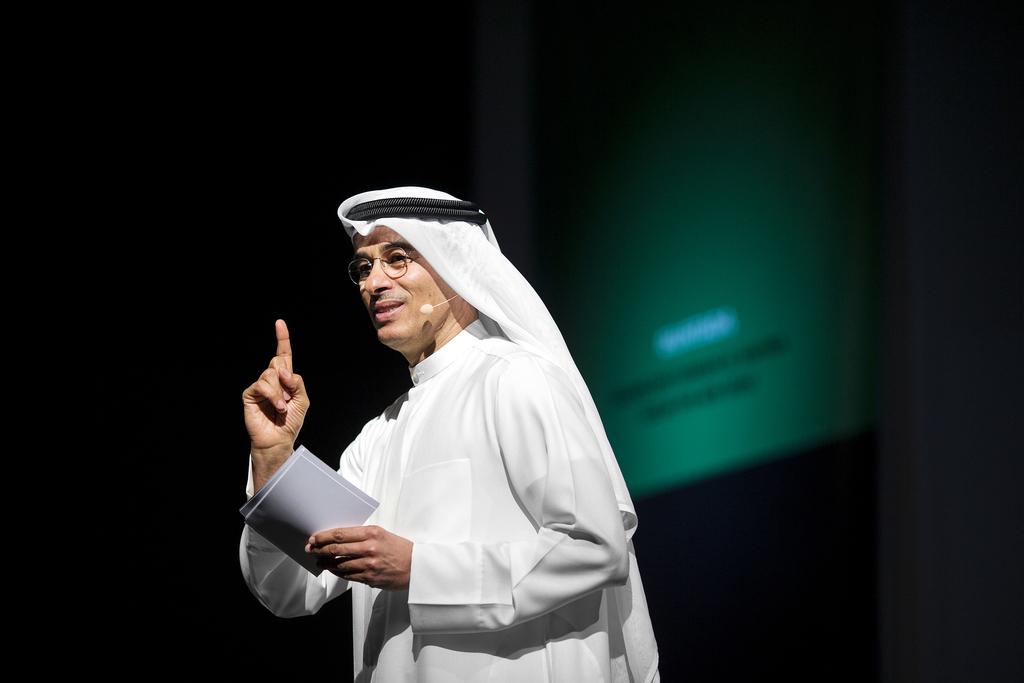
Conclusion
The story of Mohamed Alabbar is the story of modern Dubai. From humble origins, he built a company that not only reshaped a city but also influenced how the world sees the Middle East.
Through Emaar Properties, Alabbar delivered icons that became global symbols of ambition: the Burj Khalifa, the Dubai Mall, Dubai Marina, and Emirates Hills. He endured crises, navigated controversies, and diversified into new industries, proving that resilience is as important as vision.
His journey is about more than real estate. It is about turning a city into a brand, and a company into an engine of cultural influence.
As Dubai continues to expand its global role, Mohamed Alabbar’s legacy stands tall — quite literally, in the form of the world’s tallest building.


